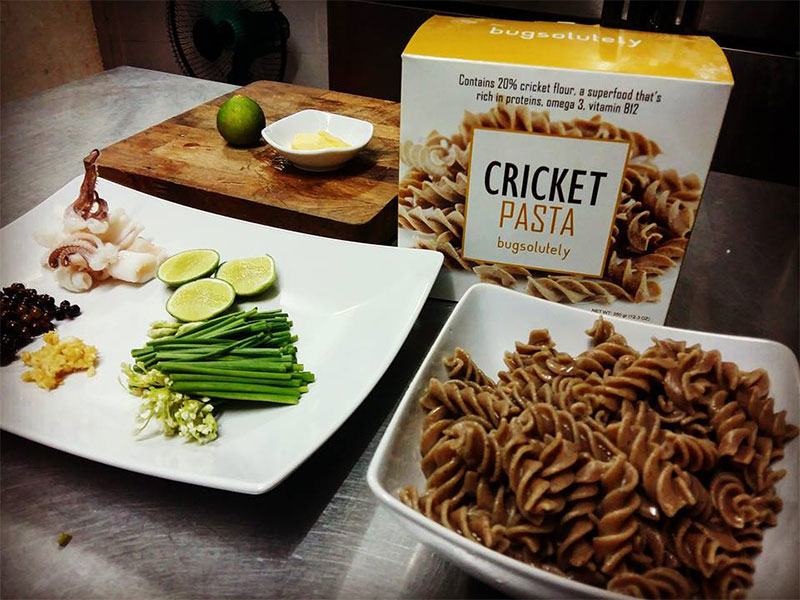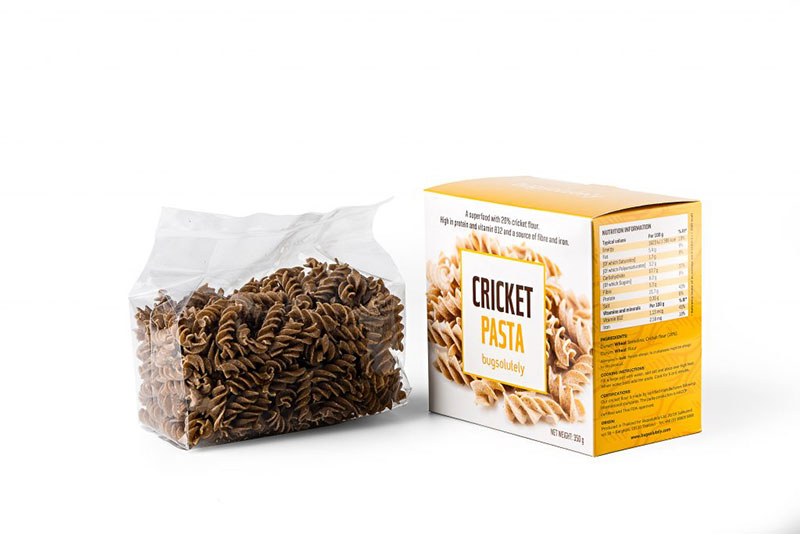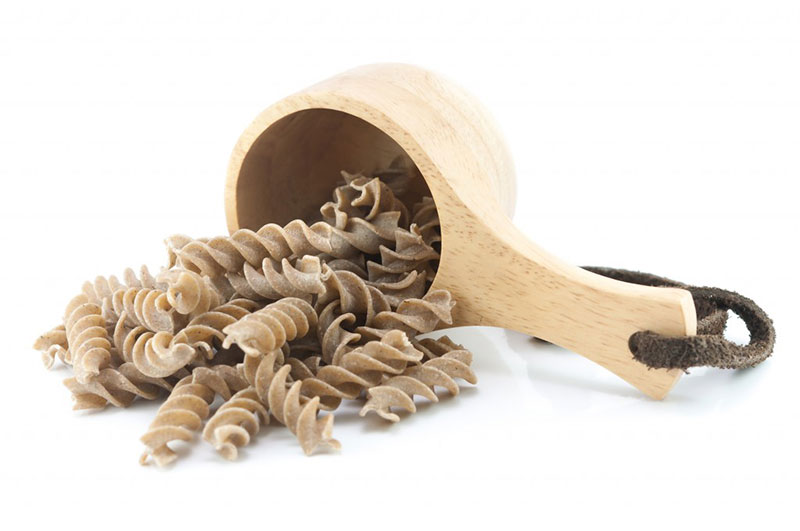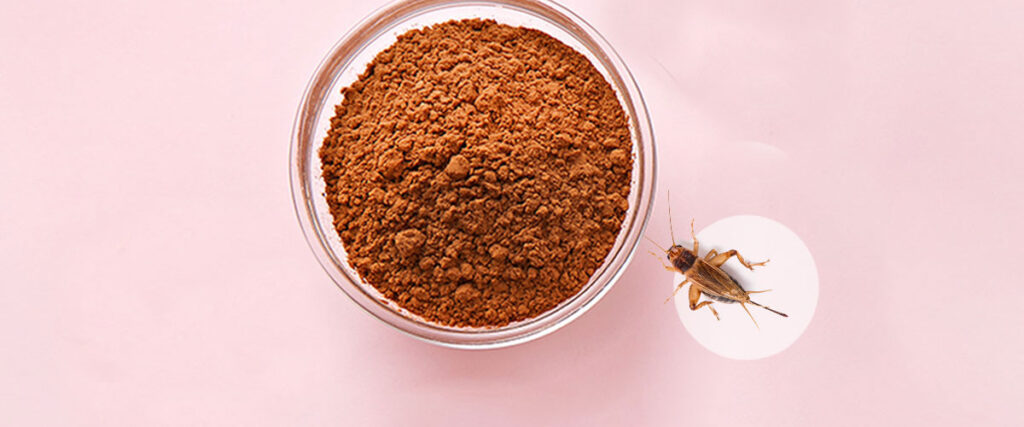We talk with the founder of Bangkok-based startup Bugsolutely, the purveyors of cricket pasta aiming to provide the world with an alternative food source.
The long quest for sustainable food production may be getting closer to becoming a reality – thanks in no small part to some rather small helpers. For, in some of the most forward-thinking corners of food development, it is the lowly insect that is seeming the most likely player in the search for a readily available, viable, alternative source of protein. All over the world, a new generation of chefs, farmers, nutritionists and sustainability experts are creating innovative ways to bring the consumption of bugs to the mainstream. One of the trailblazers involved in this growing movement is Massimo Reverberi, Founder of Bangkok-based cricket pasta brand, Bugsolutely.

Once a Marketing expert with his own Milan-based agency, Massimo sold his shares in his business after 16 years running it in 2012 and left Italy to explore opportunities in Southeast Asia. He settled in Thailand in 2014, and it was then that he first started thinking about insects as a food source. “I happened to know a little bit about edible insects from attending an event organized by the Food and Agriculture Organization of the United Nations,” he explains. “It was clear to me that one possible solution to feeding the 9 billion people expected to populate the earth in 2050 could be insects”. This realisation led him to create Bugsolutely Thailand in January 2016 with the mission of introducing tasty new superfoods that might just feed the future.

From the offset, Massimo knew he wanted to use cricket flour as the main ingredient in his alternative food production, thanks to both its nutritional value and its flavour. For starters, “it actually tastes good”, he says. Look at his packets of fusilli, and they certainly seem the perfect pairing for tomato sauce. Pasta was also a sensible food choice, given its long shelf life and the fact it is eaten all over the world. “As of now, we have sold in New Zealand, Japan and the UK”, he tells us. And, nutritionally, cricket is hard to beat. Full of protein, rich in non-dairy calcium it is also packed with 9 of the essential Amino Acids, vitamin B12, Omega 3 and Iron. “Crickets are the perfect meat because they are absolutely fantastic in terms of what you get. Dried cricket flour has 65% protein which is double the amount you will receive from beef jerky”, says Massimo. Insects are also cold-blooded and therefore very efficient to convert into edible body mass, “so people don’t have to worry about diseases being transmitted to humans as insects’ food doesn’t use antibiotics or hormones”. Still, he is aware that insect pasta is not necessarily an easy sell. That’s why he is going out of his way to normalise the idea, with an Instagram showcasing delicious recipes, collaborations with chefs and a brand that addresses the taboo straight on – ‘I don’t fear bugs, I eat them!’ his packets proudly declare.

To many, eating insects might seem like an unappealing tradition best left in the past, but for the sake of saving the planet, we shouldn’t write it off just yet. To put it in some perspective – according to Bugsolutely, whereas it takes 22,000 litres of water and produces 2,850 grams of greenhouse gases to produce 1kg of beef, the same amount of cricket costs the world less than 1 litre of water and 1 gram of greenhouse gases. As it turns out, insects are already a food staple in many places, with over 1000 species of insects known to be eaten in 80% of the world’s nations. Many cultures across North, Central and South America, Africa, Asia, Australia and New Zealand started off eating insects prior to turning to agriculture. Even though it’s less widespread amongst Western cultures, Massimo points out that “there is a popular current trend in Western countries towards the consumption of insects. Right now, there is a growing movement of Western startups investing in superfoods and using edible insects in order to make energy bars that catch the attention of both health-conscious and environmentally-minded consumers.”

While investing in insects for food is still a new and emerging phenomenon, Massimo describes the current states in Asia, “the Asian business model for farming insects was much like a hobby – small farming in the backyard”. Now, times are changing. Kasetsart University in Bangkok has done a lot in terms of researching the engineering of insects for food. In contrast, the west is focused on the development of farming insects on a large scale. He continues, “Insect farming may not be as widespread in the West, but there have been vast improvements in the past few years. For example, the Danish government is investing in research on how to farm mealworms or other insects”.
The challenge for Massimo and others like him is to banish the ‘ick’ factor surrounding bug eating. Yet, despite those widely-held preconceptions, he, for one, is confident. “I think that wide adoption of bug-eating can happen in 2 – 3 years time. Believe it or not, it took the West 20 years to start eating raw fish in Japanese restaurants. Now, sushi is one of the most common food in the world. Insect-eating will eventually make its way”. As he points out, “The critical part for the future will be how tasty the insects are and how companies aim to introduce the concept through packaging and intriguing recipes”. Either way, a serving of insects looks likely to be appearing on more and more menus. Given the health and environmental upsides of eating them, that seems nothing but a good thing.




